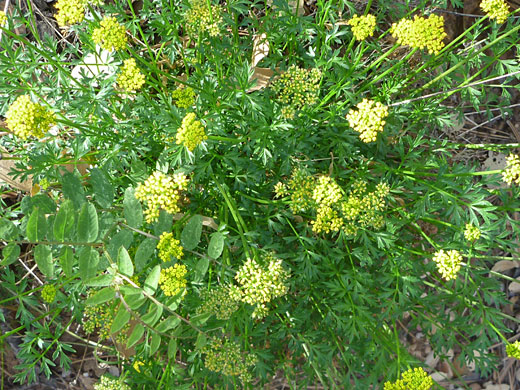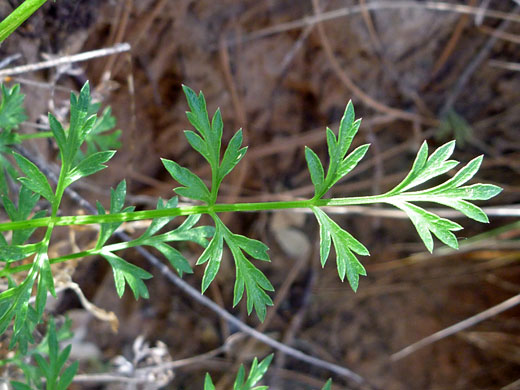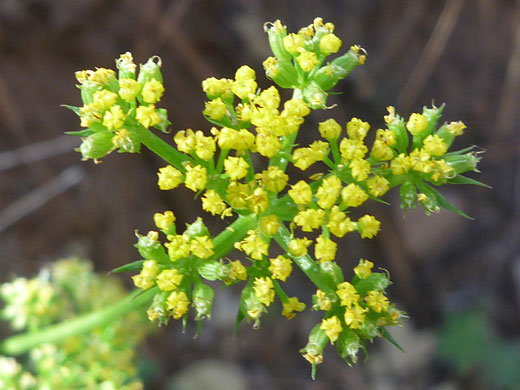Common names:
Fernleaf biscuitroot, giant lomatium
Family:
Scientific name:
Lomatium dissectum
Main flower color:
Range:
The Rocky Mountain states, and states to the west
Height:
Up to 4.5 feet
Habitat:
Woodland, bushy slopes, up to 9,500 feet
Leaves:
Up to 12 inches long, pinnately divided 3 times into linear to oblong lobes, less than an inch long
Season:
April to July
The leaves of lomatium plants are often the best means of identifying similar-looking species; those of lomatium dissectum are ternate, divided three times, first into well separated, opposite pairs, then into more closely-spaced alternate leaflets, and finally to two or three smaller, pointed lobes; usually narrow and non-overlapping. Leaves grow on stalks, up to 12 inches long, similar to the length of the blade. This is one of the largest lomatium species, reaching heights of 4 feet or more. Leaves and stems are usually smooth and hairless, but can have a covering of short, fine hairs. Leaves grow mostly from the base, spreading upwards and outwards.
Plants produce many stems, topped by flat-topped clusters of tiny flowers, which may be yellow or orange-red in color. The inflorescence is a compound umbel of 10 to 30 umbellets, each bearing a dozen or so flowers. There are two varieties, var dissectum and var multifidum, differentiated by pedicel length and fruit attachment (sessile or pedicelled).
Plants produce many stems, topped by flat-topped clusters of tiny flowers, which may be yellow or orange-red in color. The inflorescence is a compound umbel of 10 to 30 umbellets, each bearing a dozen or so flowers. There are two varieties, var dissectum and var multifidum, differentiated by pedicel length and fruit attachment (sessile or pedicelled).
All Contents © Copyright The American Southwest | Comments and Questions | Contribute | Site Map




